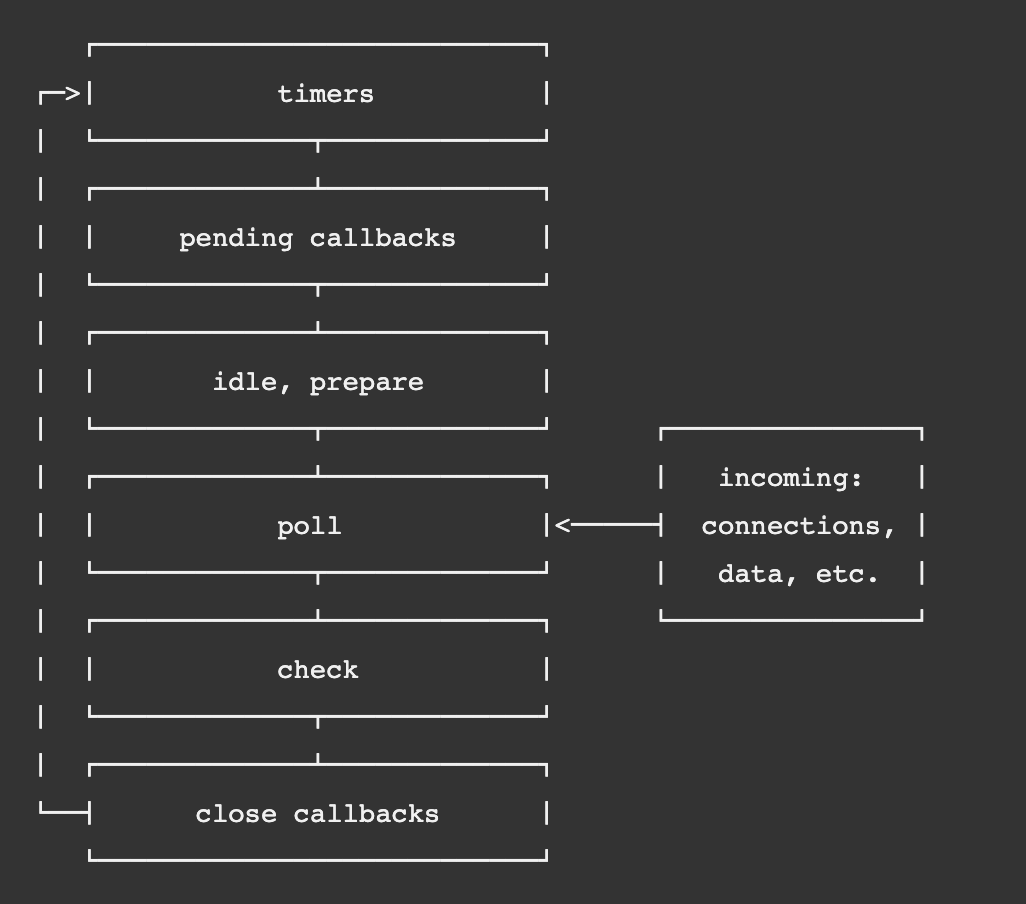
This means that the browser can’t render, it can’t run any other code, it’s just stuck. While the Call Stack has functions to execute, the browser can’t do anything else - it’s being blocked. Imagine, for example, a complex image transformation algorithm that’s running in the browser. In the first post we launched, we pondered over the question what happens when you have function calls in the Call Stack that take a huge amount of time to be processed.
NODEJS EVENT LOOP HOW TO
As the tradition goes, at the end of the article we’ll share 5 tips on how to write cleaner code with async/await Why having a single thread is a limitation? This time we’ll expand on our first post by reviewing the drawbacks to programming in a single-threaded environment and how to overcome them using the Event Loop and async/await in order to build stunning JavaScript UIs. Memory management + how to handle 4 common memory leaks.

NODEJS EVENT LOOP SERIES
Welcome to post # 4 of the series dedicated to exploring JavaScript and its building components. Since it's an alias to addListener, we’ll look at the addListener method: = Į JavaScript works: Event loop and the rise of Async programming + 5 ways to better coding with async/await This._maxListeners = this._maxListeners || undefined Inside, it’s just a protected member, this._event = // this object is used to manage the registered listeners The constructor of EventEmitter looks like this. I’m sure JavaScript developers are familiar with this mode (well not just familiar, it’s burnt into us). Once events occur, the callbacks registered to listen for the event is executed. on(listener).on() lets you register an event listener, while.

Our implementation almost all revolve around the methods. There are two very important methods that are part of event mode. The implementation of EventEmitter in /lib/events.js is less than 450 lines. The following also uses the node.js v4.5.0 LTS source code as an example. And because I wanted to write it in the style of Node.js, I ended up “copying” how it was done in Node.js (well, paying homage to great developers XD). That’s when I realized things are not what I imagined at all. Until I created an EventEmitter and a timer in the style of Node.js in Lua. When I was a newbie at Node.js, I believed that, too. One book even believes EventEmitter to be an abstraction of the event loop (which is completely wrong. Some of them jump to false conclusions while some of them hint at this. Unfortunately, none of the books or articles I’ve read have pointed this out clearly. EventEmitters are synchronousĮventEmitters are, in nature, synchronous. You might even wonder if I know Node.js at all! Well, hold your horses and calm down. You may be feeling bit confused, or maybe even a bit upset.

Node.js gave you event emitters to let you create tools for event pattern in the user space. Now, we’re going to talk about another important topic: event emitter.

I'm sure you’re feeling pretty good about yourself after going through the little analysis of event loops in our previous post. Node.js is famous for its asynchronous and event-driven nature.


 0 kommentar(er)
0 kommentar(er)
